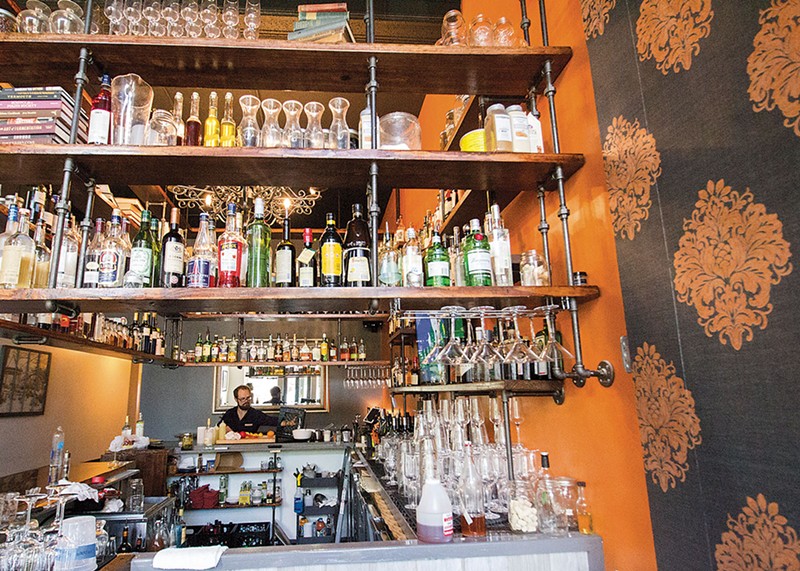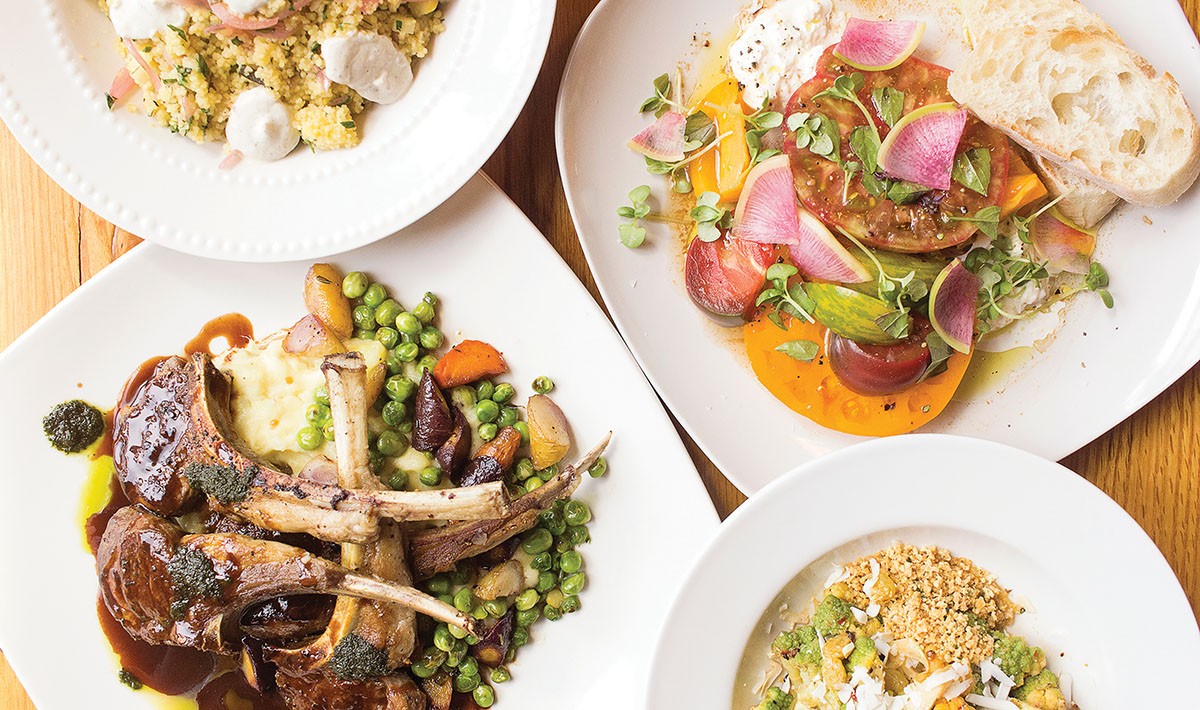Polite Society owner Brian Schmitz found himself walking through an empty dining room last spring as first the pandemic safety mandates set in. Chairs sat on top of tables and the comforting low light had given way to strong overhead lights in absence of customers. On a normal night, the popular Lafayette Square restaurant would have been buzzing. Schmitz's team had managed to achieve the elusive goal of the perfect neighborhood spot since opening three years earlier. Artful, multi-course meals from the talented kitchen staff had won over food critics since its first days, but the draw of the place was fueled just as much by the experience of being there. Exposed brick walls rose to pressed-tin ceilings, and bookshelves warmed the rooms, creating a space that was upscale but unfussy. As the name implied, attentive, graceful service was a hallmark of an evening in the care of Schmitz's staff.
But everything was changing fast that spring. Suddenly, the neighborhood favorite had been tipped on its axis, forced to adapt to the new dining landscape. The City of St. Louis implemented its first stay-at-home order on March 23, 2020, temporarily ending in-person dining. The new health orders allowed for takeout and delivery, but a quick, impersonal handoff was the opposite of the model that had made Polite Society successful. As the chaos of the pandemic set in, Schmitz knew he had to figure out how to keep people employed in a constructive way with a dining room he couldn't fill and a menu that was not geared towards delivery or curbside. "We're Polite Society... the foods are engineered to be an in-person experience," says Schmitz. "You're not going to necessarily have a $40 plate of scallops delivered to your house four days a week; it's just a natural thing."
The same was true three blocks away at Bellwether, the even fancier sibling to Polite Society. Suddenly, Schmitz and his partner Johnathan Schoen had two restaurants with full staffs, no guests and no revenue. Unsure of when that dire equation might shift, Schmitz and Schoen turned to their employees who suggested a new strategy: a ghost kitchen.
The idea of ghost kitchens — ephemeral takeout concepts temporarily haunting the underused spaces of established or bygone restaurants —predated the pandemic, but their purpose took on a new twist that spring. Rent and bills didn't go away with the COVID-19 pandemic, but neither did the demand for food. Originally intended as a way for would-be restaurants to test out new ideas before committing to a full-blown brick-and-mortar, the idea now became a way to keep existing restaurants afloat. Ghost kitchens gave restaurant owners a means to adapt to a new dining environment for which no one had prepared.

For the combined staffs of Polite Society and Bellwether, a new ghost kitchen format emerged quickly from long-running, in-house sandwich-making competitions. Pre-pandemic, the team would regularly grab hamburger buns and use ingredients from the kitchen to make their sandwiches.
"Everyone's got a favorite sandwich, something they make themselves late at night," says Schmitz.
The informal contests morphed naturally into a more formal operation that they called Sub Division. Chefs and line cooks who had been turning out filet mignon and halibut with miso butter just weeks before were now cranking out to-go sandwiches with movie-themed names such as There's No Crying in Baseball and I Believe You Have My Stapler.
The idea was a quick success with stir-crazy St. Louisans, so much so that Schmitz and Schoen began to wonder if there was life for Sub Division beyond its ghostly beginnings.


